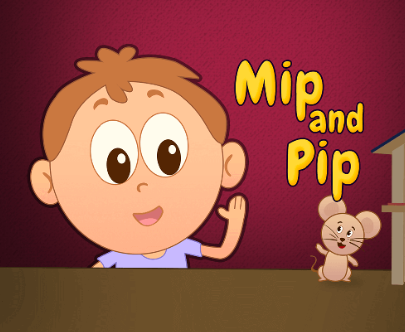- Step 1: Phonemic Awareness
- Step 2: Letter-Sound Correspondence
- Step 3: Blend Simple CVC (Consonant-Vowel-Consonant) Words
- Step 4: Practice Segmenting Words
- Step 5: Introduce Digraphs and Blends
- Step 6: Practice Decoding Regular Words
- Step 7: Introduce and Practice Sight Words
- Step 8: Introduce Multisyllabic Words
- Step 9: Apply Decoding in Context
Do you know how children begin to read words they’ve never seen before? It starts with decoding—breaking down words into sounds and blending them together. Decoding is the key to reading success, helping children become confident and fluent readers. In this blog, we’ll show you practical steps on how to teach decoding to kids effectively.
Math & ELA | PreK To Grade 5
Kids see fun.
You see real learning outcomes.
Watch your kids fall in love with math & reading through our scientifically designed curriculum.
Parents, try for free Teachers, use for free
What is Decoding in Reading?
Decoding in reading is the process of translating written words into sounds by breaking down words into individual letters or letter combinations and blending them together. It’s a fundamental skill that helps children recognize and read new words. Mastering decoding is crucial for developing strong reading abilities.
How to Teach Decoding to Kids in 9 Easy Steps
Step 1: Phonemic Awareness
Develop the ability to hear, identify, and manipulate individual sounds (phonemes) in spoken words. This is a crucial foundation for teaching decoding skills, as it helps children understand how sounds form words. If you want to know more about it, here is an in-depth guide on phonemic awareness.
When to Start: Begin this step when your child is interested in sounds and wordplay, usually around preschool age.
How to Teach:
- Sound Matching: Have children match objects or pictures that start with the same sound. Here are some fun sound-matching worksheets to get you started.
Begin here
- Rhyming Games: Play games that involve identifying and creating rhymes. Here are some fun games where a playful character will guide your child to match tiles, complete words, and discover rhyming pairs. It’s rhyme time, and the fun never stops!
Begin here
- Sound Isolation: Practice identifying the first, middle, or last sound in a word.
Begin here
After This Step, Your Child Should Be Able To:
- Recognize and match sounds in different words.
- Identify and create rhymes.
- Isolate individual sounds in words.
Related Reading: Best Grade-Wise Phonemic Awareness Activities for Kids
Step 2: Letter-Sound Correspondence
Teach the relationships between letters and their corresponding sounds. This understanding is essential for decoding and helps children read new words.
When to Start: Introduce this step once your child is familiar with the sounds of spoken language, typically during preschool or kindergarten.
How to Teach:
- Alphabet Songs and Chants: Use songs to teach the alphabet and letter sounds. Here are some exciting letter song games with a party theme where a playful character guides your child to match tiles and create an ABC song. It’s a fun and interactive way to help your child learn letter-sound correspondence!
Begin here
- Letter Tracing: Have children trace letters while saying the sound aloud. Whether you prefer traditional pencil and paper or want to explore some engaging online options, there are plenty of fun tracing games to keep your child interested.
Here are some fun tracing games where your child will follow glowing fireflies that guide them in tracing both uppercase and lowercase letters. As the fireflies move, your child will trace along the path they create, lighting up each letter stroke by stroke, turning the tracing activity into a magical adventure.
If you are looking for traditional ways to teach letter tracing, here are fun online letter-tracing games
Begin here
- Flashcards: Show flashcards with letters and ask children to say the corresponding sound.
After This Step, Your Child Should Be Able To:
- Identify the sound associated with each letter.
- Recognize letters and their corresponding sounds in words.
- Begin to use basic decoding strategies for reading.
Understanding letter-sound correspondence is one of the main decoding strategies that lay the groundwork for more advanced reading skills.
Step 3: Blend Simple CVC (Consonant-Vowel-Consonant) Words
Teach your child to blend individual sounds together to form simple CVC words like “cat,” “dog,” and “hat.” This step helps children start reading by combining the sounds they’ve learned into whole words.
When to Start: Begin this step after your child is comfortable with letter-sound correspondence, usually during preschool or early kindergarten.
How to Teach:
- CVC Word Blending Games: Get your child to play fun blending games. Here are some great options to try.
Begin here
- CVC Word Lists: Create lists of simple CVC words for your child to practice blending.
- Word Building: Use magnetic letters or letter tiles to build CVC words, encouraging your child to sound out and blend the letters.
After This Step, Your Child Should Be Able To:
- Blend individual sounds to read simple CVC words.
- Recognize common CVC words in books and everyday text.
- Begin reading simple sentences that use CVC words.
Step 4: Practice Segmenting Words
Teach your child to break down words into individual sounds. Segmenting helps children understand how words are made up of sounds, which is essential for both reading and spelling.
When to Start: Begin this step once your child is comfortable blending simple CVC words, typically during early kindergarten.
How to Teach:
- Segmenting Games: Have your child engage in segmenting practice through fun exercise. Here are some interactive options.
Begin here
- Sound Boxes: Use sound boxes or Elkonin boxes where each box represents a sound. Have your child say a word slowly and place a marker in each box as they hear each sound.
- Finger Tapping: Encourage your child to tap a finger for each sound in a word. For example, for the word “cat,” they would tap three times—/c/, /a/, /t/.
- Oral Segmentation: Say a word aloud and ask your child to break it down into its individual sounds by saying each sound separately.
After This Step, Your Child Should Be Able To:
- Break down simple words into individual sounds.
- Recognize that words are composed of distinct sounds.
- Use segmentation to help with spelling and writing words.
Step 5: Introduce Digraphs and Blends
Teach your child about digraphs (two letters that make one sound, like “ch,” “sh,” “th”) and blends (two or more consonants blended together, like “bl,” “st,” “cr”). This step helps children recognize more complex sound patterns in words.
When to Start: Begin this step after your child is confident with blending and segmenting CVC words, usually during late kindergarten or early first grade.
How to Teach:
- Digraph Flashcards: Use flashcards to introduce common digraphs. Show the digraph and have your child say the sound it makes (e.g., “ch” as in “chip”).
- Blending Practice: Create word lists or use magnetic letters to form words with blends (e.g., “stop,” “blend”). Have your child practice blending the sounds together.
- Word Sorts: Use word sorts to help your child distinguish between different digraphs and blends, grouping words with similar patterns together.
After This Step, Your Child Should Be Able To:
- Identify and pronounce common digraphs and blends.
- Recognize and read words containing digraphs and blends.
- Apply their knowledge of digraphs and blends to decode new words.
Step 6: Practice Decoding Regular Words
Help your child apply their knowledge of letter-sound correspondence, digraphs, and blends to read regular words. This practice builds fluency and confidence in reading.
When to Start: Begin this step once your child is familiar with digraphs and blends, typically during first grade.
How to Teach:
- Decodable Books
Use simple decodable books that contain words your child can sound out based on their current knowledge.
Here are some fun decodable books designed to reinforce phonics instruction. These books use text that strictly follows the phoneme-grapheme correspondences children have learned, ensuring a focus on systematic decoding. By doing so, they help strengthen the neural pathways linked to phonemic awareness and orthographic mapping, which are essential for building early reading fluency and word recognition.
- Word Lists: Provide lists of regular words that include a mix of CVC words, words with digraphs, and words with blends. Have your child practice reading these words aloud.
- Daily Reading Practice: Encourage daily reading of simple texts that match your child’s decoding level. Regular practice helps reinforce skills and build reading fluency.
After This Step, Your Child Should Be Able To:
- Decode and read a variety of regular words independently.
- Recognize familiar word patterns and apply them to new words.
- Read simple sentences and short paragraphs with increased confidence.
Step 7: Introduce and Practice Sight Words
Teach your child to recognize and read sight words—common words that often don’t follow regular phonetic patterns, like “the,” “said,” and “was.” Sight words are crucial for reading fluency because they frequently appear in text.
When to Start: Begin introducing sight words after your child has a solid grasp of decoding regular words, typically during kindergarten or first grade.
How to Teach:
- Flashcards: Use flashcards with sight words. Show the word and have your child say it aloud, focusing on quick recognition.
- Sight Word Games: Play games to make sight word practice fun and engaging. Here are some fun sight word games to get your child started.
Begin here
- Daily Reading: Incorporate sight words into daily reading practice, pointing them out in books and encouraging your child to recognize them. Here are some fun bedtime stories that you can read with your child.
After This Step, Your Child Should Be Able To:
- Quickly recognize and read common sight words.
- Improve reading fluency by instantly recognizing words that don’t follow regular decoding patterns.
- Read more smoothly and with greater comprehension.
Step 8: Introduce Multisyllabic Words
Teach your child how to decode words with more than one syllable, which is an important step in advancing their reading skills.
When to Start: Introduce multisyllabic words once your child is comfortable with decoding single-syllable words, usually in late first grade or early second grade.
How to Teach:
- Syllable Clapping: Teach your child to break down words into syllables by clapping once for each syllable (e.g., “but-ter-fly”).
- Syllable Types: Introduce different syllable types (e.g., open, closed) and show how they come together in longer words.
- Chunking Words: Encourage your child to “chunk” longer words by looking for familiar syllables, prefixes, and suffixes.
After This Step, Your Child Should Be Able To:
- Break down and decode multisyllabic words into manageable parts.
- Recognize common syllable patterns and apply them to new words.
- Read longer words with greater confidence and accuracy.
Step 9: Apply Decoding in Context
Encourage your child to practice decoding skills while reading books, stories, and other texts. This step helps bridge the gap between decoding individual words and comprehending passages.
When to Start: Begin this step as your child becomes more comfortable with regular and multisyllabic words, typically during first or second grade.
How to Teach:
- Guided Reading: Read books together, guiding your child to decode unfamiliar words as they encounter them in context.
- Ask Questions: After reading, ask your child questions about the text to ensure they’re decoding and understanding what they read.
- Reinforcement: Repeated readings of familiar texts reinforce decoding skills and improve fluency.
After This Step, Your Child Should Be Able To:
- Apply reading decoding strategies while reading complete sentences and passages.
- Improve reading comprehension by understanding how individual words fit into the story’s context.
- Read with greater fluency and confidence in both familiar and new texts.
Conclusion
In conclusion, teaching your child to decode is a vital step in their reading journey. By following these steps, you can improve decoding skills and build their confidence as a reader. Use these decoding reading strategies to make the process fun and effective. Remember, understanding how to teach decoding sets the foundation for lifelong learning success.
Related Reading: How to Teach Phonics to Kids
Frequently Asked Questions (FAQs)
What are the steps of decoding?
The steps of decoding include developing phonemic awareness, learning letter-sound correspondence, blending sounds to form words, practicing segmenting words, and applying these skills in reading context.
What are the three positions of decoding?
The three positions of decoding refer to identifying sounds in the beginning, middle, and end of a word, which helps in recognizing and understanding the structure of words.
What are examples of decoding?
Examples of decoding include sounding out the letters “c-a-t” to read the word “cat,” blending sounds in “bl” and “end” to read “blend,” or segmenting the word “ship” into “sh” and “ip” to understand it.



























































